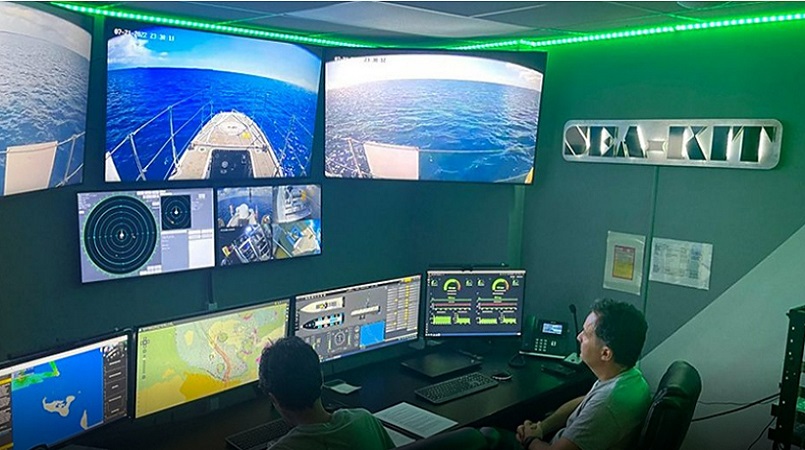
A remotely controlled boat is surveying the gigantic opening of the Hunga-Tonga Hunga-Ha’apai volcano.
The January eruption of Hunga-Tonga Hunga-Ha’apai and the subsequent tidal wave caused devastation in Tonga and killed people as far away as South America. The atmospheric shockwave caused by the eruption was felt as far away as the UK.
Kaniva News reports the robot boat, the Maxlimer, is based in Tonga, but will return to the site of the volcano to complete the survey of the opening, known as a caldera.
The caldera of Hunga-Tonga Hunga-Ha’apai is four kilometres wide and drops to a base 850m below sea level. Before the catastrophic eruption, the base was at a depth of about 150m.
The eruption ejected an enormous amount of material, estimated to be at least 6.5 cubic kilometres.
“If all of Tongatapu, the main island of Tonga, was scraped to sea level, it would fill only two-thirds of the caldera,” Professor Shane Cronin from the University of Auckland said.
The data collected by Maxlimer will help scientists understand why the eruption had such a huge and violent impact, as well as help to predict the nature of future eruptions.
According to the BBC, a winch on the boat allows instruments to be lowered to depths of 300 metres to collect data. The data collected so far has confirmed earlier reports of continuing volcanic activity.
The boat is being remotely controlled by scientists in the UK as part of the Tonga Eruption Seabed Mapping Project, which is led by New Zealand’s National Institute of Water and Atmospheric Research and funded by the Nippon Foundation of Japan.
Ashley Skett, director of operations for the UK operation, said that surveying a dangerous area such as an active volcano with a remotely controlled vessel meant no crew were endangered.
With no crew, robot vessels can be much smaller and use far less fuel.
Photo supplied
